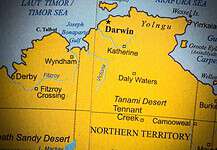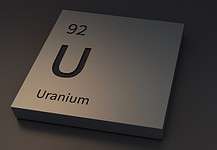Image: The Russian Presidential Press and Information Office.
BY REUBEN ADAMS
MINERS are confident that China’s unprecedented $US1.3 trillion infrastructure investment program, the Belt and Road Initiative (BRI), is the vehicle to drive massive medium to long term demand for iron ore. Short term forecasts, however, paint a less-than-rosy picture.
“Among the range of possibilities we consider, our base case remains that Chinese steel production is yet to peak,” BHP Market Analysis and Economics VP Dr Huw McKay wrote in September.
“The most likely timing of the peak is the middle of next decade.”
Australia’s iron ore majors have a consensus positive outlook – and a key driver is the Belt and Road Initative (BRI), a China-led strategy to increase connectivity and cooperation along trade routes encompassing 68 countries.
It is an unprecedented undertaking, and one that would need a lot of steel – up to 150 million tonnes (mt) of incremental demand, according to Dr McKay.
“Spread over a 10-year period, this amounts to an additional 15 million tonnes per annum (mtpa), or 3 per cent to 4 per cent incremental demand growth for steel in BRI regions,” he said. “This is considerable, as it would double the growth rate of local steel demand observed since 2011.
BRI has the potential to make a direct and indirect economic contribution of historic significance, and one whose benefits could last for generations, Dr McKay said.
“In our view, long run positions on Chinese steel that do not explicitly reference BRI are incomplete.”
Rio Tinto has also noted the potential for growth through the BRI, and ahead of the Bao Asia Forum in March this year, FMG boss Nev Power said that as the One Belt, One Road initiative continued to grow “the openness and mutual understanding established by our bilateral trade relationships will be critical to its success.”
Not everyone agrees. The news cycle quickly picked up an October note from Morningstar analyst Mathew Hodge, who urged caution stating that “much of the overwhelmingly positive commentary lacks context and is wide of the mark”.
“Major iron ore miners such as BHP Billiton, Rio Tinto, and Fortescue all expect BRI to drive further growth in steel demand in China, and in turn support growing demand for iron ore,” he said.
“BHP expects China’s steel demand to continue to grow at about 1 per cent, per year until the middle of the next decade.
“However, we think the likely spend on BRI, and its consequent boost to steel and iron ore demand, is small in context of China’s already heady spending on fixed asset investment.”
And the consensus outlook for 2018 and 2019 isn’t rosy. The September instalment of the Resources and Energy Quarterly report noted recent positive trends – namely, that Australia’s iron ore export earnings increased by 32 per cent in 2016–17 to $63 billion, driven in large part by higher prices.

But the value of Australia’s iron ore exports is forecast to decline to $54bn in 2018–19, as the impact of forecast lower prices offsets volume gains.
The iron ore price is forecast to decline to $US49 a tonne (FOB Australia) in 2019, due to growing low-cost supply from Australia and Brazil and moderating demand from China.
China’s winter curtailment policy – which takes effect from mid-November 2017 to mid-March 2018 – requires a 50 per cent reduction in steel production in major steel producing cities to improve air quality.
“It is highly likely that steel production has been brought forward, in order to stockpile for winter when production will be affected,” The Resources and Energy Quarterly report stated. “Steel inventories have increased in the first half of September 2017, following several months of drawdowns.
“If shortages do not eventuate in line with expectations, there may be additional downward pressure on steel prices and production.
“China’s steel production growth is expected to remain strong ahead of November.”
Yet Australia’s iron ore export volumes are forecast to rise from 819mt in 2016–17 to 887mt in 2018–19, as a result of ongoing productivity gains and new additions to capacity.
And these additions to capacity may continue for some time.
Rio Tinto approved an investment of $30.9m to complete project feasibility for development of its Koodaideri iron ore deposit in May, and BHP approved initial funding for its $3bn South Flank project in June. Then there’s the Roy Hill-esqe dark horse – BBI Group’s $6bn, 45mtpa Balla Balla mine, port and rail project.
BBI is reportedly in early talks with Government over a concessional loan after signing a State Agreement with the former WA Government covering the rail line and port infrastructure in January, and a MoU with a heavyweight Chinese construction company in March.








































